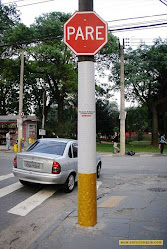SATIRICON
Cinema, jornalismo e arte
sexta-feira, 1 de agosto de 2014
quinta-feira, 16 de janeiro de 2014
domingo, 7 de abril de 2013
A música de Leonardo da Vinci
 Leonardo da Vinci foi o que podemos chamar de um ser humano polivalente, era um curioso insaciável e pelo que ele escreveu em seus cadernos vemos um homem bem a frente de seu tempo, não só no quesito intelectual, mas como edificador do bom senso e da espiritualidade humana na definição mais singela.
Leonardo da Vinci foi o que podemos chamar de um ser humano polivalente, era um curioso insaciável e pelo que ele escreveu em seus cadernos vemos um homem bem a frente de seu tempo, não só no quesito intelectual, mas como edificador do bom senso e da espiritualidade humana na definição mais singela.
Quando morreu não tinha noção alguma que revolucionara a arte e a ciência, em leito de morte pediu ao seu assitente que finalizasse algumas de suas obras e tinha certeza porque estava certo que não tinha feito nada de siginficante. Mas fez !, Leonardo foi a personificação do homem renascentista. Além de escultor, pintor, arquiteto, matemático, engenheiro, inventor e por aí vai...foi também músico. Deleite-se com a musicalidade de um gênio!
domingo, 27 de janeiro de 2013
EM BREVE LANÇAMENTO DO LIVRO STREET LANGUAGE
Um manual para falar melhor Inglês !
Chegou a hora de aprender um pouco daquele Inglês que o seu
professor não vai te ensinar em sala de aula. Você tem em mãos a oportunidade
de aprender um inglês de verdade, cara de pau e sem pudores; “o inglês das ruas!”:
gírias, palavrões, curiosidades e estruturas bem informais que estão no
cotidiano do falante nativo do inglês e que raramente vão estar nos livros
didáticos por simples caretice.
Mas não é só isso, com este livro você
vai entender como funcionam algumas contrações da escrita informal, aprender a
diferença entre palavras que ainda causam muita dúvida na hora de escrever ou falar
e descobrir algumas curiosidades encontradas nas ruas das cidades. Um manual
útil que vai te ajudar a se comunicar em inglês de maneira muito mais
“descolada”!
por: Fernando Caetano
EXEMPLO DE AMOR PELOS ANIMAIS
Um exemplo de amor pelos animais, um senhor aqui de Porto Velho resolveu alimentar animais do parque que estavam morrendo de fome.
terça-feira, 8 de janeiro de 2013
Haitians Take Arduous Path to Brazil, and Jobs
BRASILÉIA, Brazil — Of the odyssey that delivered him to this town in the Brazilian Amazon, Wesley Saint-Fleur could muster only a look of exhaustion and bewilderment.
Months ago,
he boarded a bus in Haiti, before getting on a plane in the Dominican Republic,
landing first in Panama and then in Ecuador. That was where his wife gave birth
to their son, Isaac, he said, bouncing the 4-month-old infant on his knee and
brandishing the boy’s Ecuadorean identification card. Then they continued by
bus yet again, through Ecuador and Peru. Next, they trekked by foot in Bolivia,
where, he said, the police robbed him and his wife of their clothing and their
life savings: $320 in cash.
“Then we
finally got to Brazil, which I’m told is building everything, stadiums, dams,
roads,” said Mr. Saint-Fleur, 27, a construction worker, one of hundreds of
Haitians who gather each day around the gazebo in Brasiléia’s palm-fringed
plaza. “All I want is work, and Brazil, thank God, has jobs for us.”
Gambling
everything, thousands of Haitians have made their way across the Americas to
reach small towns in the Brazilian Amazon over the past year in a desperate
search for work, including a surge of hundreds arriving in recent days amid fears
that Brazil’s government could slow the influx before it overwhelms the
authorities here.
Their
improbable journeys — from the rubble of their island homes to remote outposts
here in the Amazon — say as much about the dire economic conditions that persist
in Haiti two years after the earthquake as it does about the rising economic
profile of Brazil, which is fast becoming a magnet not only for poor foreign
laborers but also for growing numbers of educated professionals from Europe,
the United States and Latin America.
Upon
arriving here and in other border outposts, the Haitians are often given
vaccinations, clean water and two meals a day by the authorities. Many stay for
weeks in Brasiléia and other towns before being granted humanitarian visas that
allow them to work in Brazil.
But with
such a crush of new arrivals, others have not been so lucky. After traveling
thousands of miles and overcoming countless obstacles, some crowd eight to a
small hotel room or wind up sleeping on the streets, almost reliving the misery
they had hoped to leave behind.
“I cannot
allow the sadness to take over, since opportunity will follow this hard phase,”
said Simonvil Cenel, 33, a tailor awaiting a visa who leads animated
evangelical prayer services for those stuck in limbo after enduring so much to
get here.
About 4,000
Haitians have immigrated to Brazil since the 2010 earthquake, often going first
through Ecuador, a poorer country with lax visa policies. Brazil has made an
exception for Haitians in contrast to job-seekers from nations like Pakistan,
India and Bangladesh, who arrive via similar Amazonian routes but are usually
expelled.
“Haiti is
recovering from an extreme period of crisis, and Brazil is in a position to
help these people,” said Valdecir Nicácio, a human rights official in the state
of Acre, encompassing Brasiléia. “Before getting here, they are at the mercy of
human traffickers,” he said. “Brazil is big enough to absorb Haitians who just
want jobs.”
With the
number of Haitians sharply increasing in recent days, the authorities in
Brasiléia and Tabatinga, a border city in Amazonas State, have warned of the
strains of trying to feed and house the Haitians while visa applications are
reviewed. Federal officials have responded by sending tons of food for the
Haitians, who currently number more than 1,000 in each border settlement.
Dealing
with an immigration crisis on its border is a new dilemma for Brazil, which
until recently was more concerned with the outflow of its own citizens seeking
opportunities in rich industrialized countries than responding to the arrival
of thousands of impoverished foreigners.
Though
economic growth has recently slowed in Brazil, unemployment remains at a
historic low of 5.2 percent, and many companies have trouble finding enough
workers to fill vacancies. Wages have also climbed for those at the lowest rung
of the job market, with the income of poor Brazilians growing seven times as
much as the income of rich Brazilians from 2003 to 2009.
“We were
experiencing a decline in our work force because so many Brazilians are going
to work at the two hydroelectric projects,” said Ana Terezinha Carvalho, the
personnel management analyst at Marquise, a company in Porto Velho. The city
lies in the upper Amazon River Basin, where Brazil is employing thousands to
build two big dams, called Jirau and Santo Antônio.
Ms.
Carvalho said her company quickly hired 37 Haitians who arrived last year, to
collect trash in Porto Velho and take it to the city’s landfill. Some make more
than $800 a month, in a job that includes benefits like health insurance,
overtime and paid holidays. “There weren’t enough Brazilians, so we were happy
to hire the Haitians,” she said.
The
authorities estimate that about 500 Haitians now live in Porto Velho and that
about 700 are in Manaus, the largest city in the Brazilian Amazon. Hundreds
more have made it to São Paulo, Brazil’s economic capital. Companies like
Fibratec, a swimming pool manufacturer in southern Santa Catarina State, have
even sent managers all the way here to hire dozens of Haitians.
In addition
to meeting demand for cheap labor, the effort to let Haitians work in Brazil
speaks to the country’s ambitions of wielding greater regional influence, by
attempting to find ways of alleviating problems in the hemisphere’s poorest
nation.
Since 2004,
Brazil has sent troops to lead a United Nations peacekeeping mission in Haiti.
But there are now more Haitians in Brazil than Brazilian soldiers in Haiti. In
September, Brazil announced that it would start drawing down its 2,000 troops
in the Caribbean nation.
Most of the
Haitians hope to spend just a few weeks in Brasiléia’s immigration limbo,
before moving on. Some, like Francisco Joseph, 25, make the most of the time
here. He buys prepaid cellphone cards across the bridge in the Bolivian city of
Cobija and sells them to fellow Haitians in Brasiléia’s plaza at a markup of
about 30 cents a card. He makes as much as $10 a day.
“This
little bit of money gives me a little bit of dignity,” he said.
Others,
like Jacksin Etienne, 31, nurture bigger dreams. A polyglot who glides with
ease between English, Spanish, French and Creole, Mr. Etienne said he hoped to
work as a translator or in a hotel.
“I want to
go straight to São Paulo, the New York of South America,” he said. “Brazil’s a
rising kind of place, and it needs people like me.”
terça-feira, 15 de fevereiro de 2011
terça-feira, 21 de dezembro de 2010
Ped Xing

Essa placa de trânsito pode causar algumas confusões. Trata-se de um invenção bem interessante, ped nada mais é que a abreviação de “pedestrian” e Xing é a abreviação de “crossing” o “ X” dá a ideia de cruzamento, ele representa isso graficamente, ele representa como o “X” pode dar a ideia de cruzamento, sendo assim o “X” neste caso parte de uma representação pictórica de um cruzamento. Portanto podemos interpretar a placa como “travessia de pedestres”.
DESENHOS TOSCOS

Esses são dois planfletos que merecem estar nesta postagem, de fato são bem toscos. Caso você tenha visto um desenho tosco, mandei para mim no e-mail: fantashik@gmail.com
quarta-feira, 8 de dezembro de 2010
Assinar:
Postagens (Atom)


.jpg)
.jpg)
.jpg)
.jpg)

































